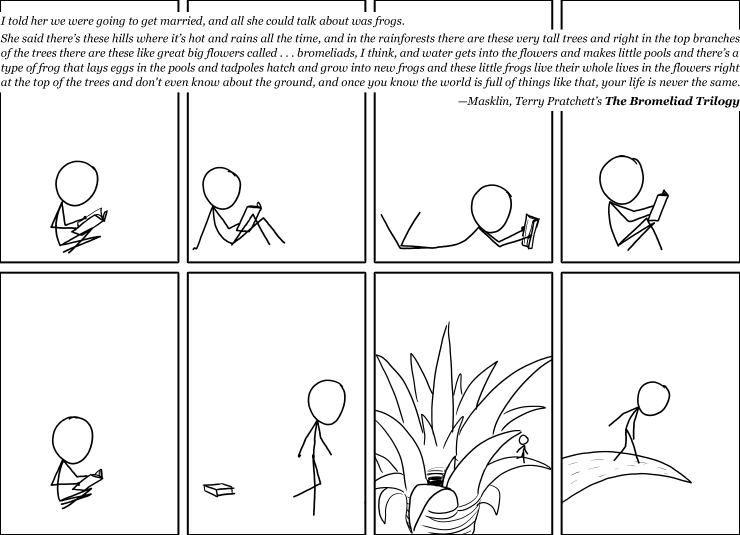David Muxworthy, ISO Fortran standards committee (WG5) Corrigenda editor and member of BCS (formerly British Computer Society) recently sent along a fascinating document. It comes from a project to digitize old papers from the archive of the BCS Fortran Specialist Group and is a 1977 summary of changes made to FORTRAN 77 as a result of the public comment review.
MoreDoctor Fortran in “One Door Closes”
In previous posts (here, here and here), I’ve written about the content of and process of creating the next revision of the Fortran standard, Fortran 2015. At the August 2015 joint WG5/J3 meeting in London, England, we finally shut the door on adding still more new features to F2015, though a few snuck in during the meeting. First I’ll bring you up to date on what’s planned for the new standard, including the latest additions, and then talk a bit about what comes next.
MoreDoctor Fortran in “We All Live in a Yellow Submodule”
Fortran 90 introduced the concept of modules, a separately compiled collection of declarations and procedures that could be referenced by other program units. This was borrowed from Ada, (and probably other languages), but omitted one very useful Ada feature: IS SEPARATE. Why is this important? With Fortran modules, a source file that USEs a module is dependent on the entire module; if any change is made to the module, every source that USEs it must be recompiled even if the changes have no effect on the interface. If you have nested modules, as many applications do, this can lead to a “recompilation cascade” that dramatically increases build time for even the most minor change.
MoreDoctor Fortran in “The Future of Fortran”
In November 2014, I led a session at SC14 (the event formerly known as “Supercomputing”) titled “The Future of Fortran”. I invited representatives from other vendors and members of the Fortran standards committee to participate, and had some accept, but when it came time for the session, I was up there alone. Oh well…
MoreGNU Terry Pratchett
This post contains no Fortran.
British author Sir Terry Pratchett died March 12, 2015 at age 66, finally succumbing to what he called “The Embuggerance”, a rare form of Alzheimer’s disease, posterior cortical atrophy (PCA), which affects the rear portions of the brain. An extensive obituary can be found here, and there’s also Wikipedia’s page on Pratchett.
MoreDoctor Fortran in “It’s a Modern Fortran World”
I recently received a copy of “Numerical Computing with Modern Fortran”, by Richard Hanson and Tim Hopkins, and noted how many books on Fortran are being published recently with “Modern Fortran” in the titles. It turns out this is not a new phenomenon – a search on Amazon.com shows that this phrase has been used for books on Fortran 90 and even Fortran 77! I chatted about this with two of the newer books’ authors, asking why they felt it necessary to qualify Fortran that way. The answer was generally that many programmers’ view of Fortran is stuck in the F77 or even F66 days and that it was helpful to prod them into thinking of Fortran as modern, which of course it is. A side benefit, I guess, is that they can reuse the title when the standard changes!
MoreHas it really been 35 years?
I knew this date was coming up, but I had forgotten about it for a while until my manager reminded me – October 2, 2013 marks my 35th anniversary “at Intel”. I put that in quotes because Intel “grandfathered” my time at DEC and Compaq. It was October 2, 1978, when I walked into DEC’s facility in Tewksbury, Massachusetts, as a new employee. The site, like many of DEC’s in that day, was a converted shopping center – the main entry was where a Caldor department store had been, and a smaller building across the parking lot had been an A&P supermarket. Nowadays it’s an office park owned by an insurance company.
MoreDoctor Fortran Goes Dutch: Fortran 2015
The ISO Fortran Standards Committee held its annual meeting in Delft, The Netherlands, in late June. I represented Intel at this meeting where the focus was on completing the set of requirements for the next revision of the Fortran standard, to be called Fortran 2015. You can read my earlier post on the standards process at The Real Doctors of Fortran, but I’ll recap a summary here.
MoreDoctor Fortran in “Source Form Just Wants to be Free”
In the beginning, there was only one source form for FORTRAN (as it was then known) programs. Each statement was exactly 72 characters long – no more, no less. (See note below.) Columns 1-5 were for statement labels, whole line comments were indicated with a C in column 1, and column 6 was reserved for a continuation indicator. Blanks in the statement field, outside of character or Hollerith literals, were ignored. The standard didn’t (and still doesn’t) talk about how source programs are fed into a compiler, but on systems where there were “file types”, the types .for, .f and .ftn were usually recognized as being Fortran.
MoreDoctor Fortran in “I Can C Clearly Now, Part I”
Spend any time in the comp.lang.fortran newsgroup, or other places where programming languages are discussed, and you’ll soon see a new “Which is better, Fortran or C?” thread show up. These never fail to produce heated comments from people who should know better. My answer is that neither is “better” – each has its strengths and weaknesses.
More
